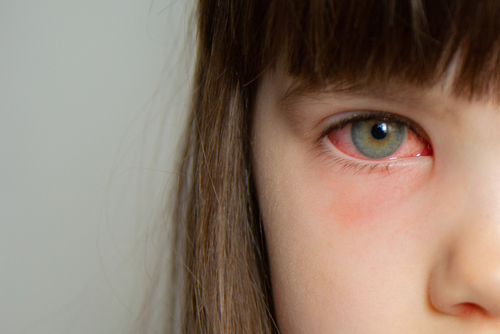Is Pink Eye Always Contagious?
Pink eye, also known as conjunctivitis, occurs when the whites of the eye take on a pink or red color. This is caused by the swelling of the thin layer of tissue, known as the conjunctiva, that lines the white part of the eye and the inside of the eyelid.
Keep reading to learn if pink eye is always contagious!
Contagion Depends on the Cause
Pink eye can be contagious or non-contagious, depending on the cause. Sometimes determining that cause can be difficult because several symptoms are common to both types.
Here are some of the most common symptoms of pink eye:
- Watery eyes from increased tear production
- Grittiness as if something is in the eye or an urge to rub the eye
- Itching, irritation, or burning
- Eye discharge, either pus or mucus
- Crusty eyelids and lashes
- Discomfort wearing contact lenses
If you are experiencing any of these symptoms, it’s important to visit your eye doctor right away. Avoid touching your eyes, and wash your hands frequently.
Which Kinds of Pink Eye Are Contagious?
Contagious conjunctivitis is caused by a viral or bacterial infection. It can be spread through direct contact with the discharge from the infected eye or by touching contaminated surfaces and then touching the eye.
Kids often come home with these forms of pink eye, as it spreads easily through schools and other crowded places. The contagious forms of pink eye typically spread by:
- Direct contact with bodily fluids from the infected person, usually from hand to eye
- Bacteria living in the individual’s own nose and sinuses
- Poor contact lens hygiene, wearing badly-fitted contacts or decorative non-prescription contact
Children are especially likely to get and spread viral and bacterial conjunctivitis as they are less likely to wash their hands and keep their fingers away from their face, nose, and eyes.
What is Viral Conjunctivitis?
Viral conjunctivitis is the most common type. Symptoms are typically burning, red eyes with a watery discharge.
It’s usually caused by the same virus that produces a runny nose and sore throat seen in individuals suffering from the common cold.
What is Bacterial Conjunctivitis?
Bacterial conjunctivitis starts with an infection from bacteria. Eyes will be sore and red and discharge a lot of sticky pus.
Some bacterial infections, however, may cause little or no discharge. Some forms of bacteria that cause pink eye are the same ones that cause strep throat.
Is There a Form of Pink Eye That is Not Contagious?
Non-contagious pink eye is allergic conjunctivitis. This type is not caused by a viral or bacterial infection and is not contagious.
It can be caused by allergens, irritants, or dry eyes. Allergic conjunctivitis is a type of pink eye that comes from an allergic reaction.
It can be triggered by pollen, animals and pet dander, cigarette smoke, pool chlorine, car fumes, smoke, or other environmental exposures. Symptoms of allergic pink eye are itchiness, redness, and watery eyes.
It can also cause your eyelids to get puffy.
How to Stop the Spread or Prevent Pink Eye Reinfection
Although viral and bacterial conjunctivitis are very contagious, there are certain steps you can take to help stop the spread or prevent yourself from getting reinfected.
Here are some steps you can take to avoid spreading pink eye:
- Don’t reuse towels or tissues for your face or eyes
- Wash your hands frequently, especially after eating, using the toilet, or sneezing/coughing
- Avoid touching your eyes
- Avoid eye makeup during infection, and throw out makeup if you’ve had an infection
- Clean contact lenses properly
Are you experiencing symptoms of pink eye? Schedule an appointment at Mid Ohio Eye in Columbus, OH, today!










